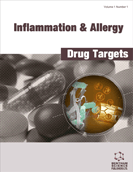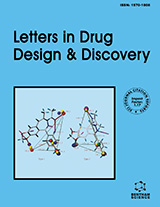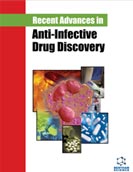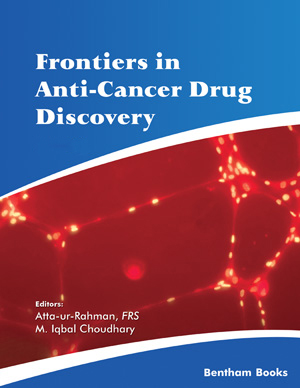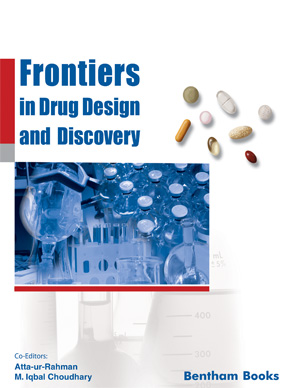Abstract
Hydrogen sulfide (H2S) is a gas that can be formed by the action of two enzymes, cystathionine gamma lyase (CSE) and cystathionine beta synthase (CBS). H2S has been known for hundreds of years for its poisoning effect, however the idea that H2S is not only a poison, but can exert a physiological role in mammalian organisms, originates from the evidence that this gaseous mediator is produced endogenously. In addition to H2S synthesis by gastrointestinal tissue, the intestinal mucosa, particularly in the large intestine, is regularly exposed to high concentrations of H2S that are generated by some species of bacteria and through the reduction of unabsorbed intestinal inorganic sulphate. This review reports on the effects of H2S in the gastrointestinal tract and liver and provides information on the therapeutic applications of H2Sdonating drugs.
Keywords: Hydrogen sulfide, cystathionine-β-synthase (CBS), cystathionine-γ-lyase (CSE), stomach, colon, liver, gut motility, inflammation, pyridoxal-5'-phosphate-dependent enzymes, non-steroidal drugs, anti-inflammatory drugs, NSAIDs, L-cysteine
Inflammation & Allergy - Drug Targets (Discontinued)
Title: Hydrogen Sulfide in Gastrointestinal and Liver Physiopathology
Volume: 10 Issue: 2
Author(s): Sabrina Cipriani and Andrea Mencarelli
Affiliation:
Keywords: Hydrogen sulfide, cystathionine-β-synthase (CBS), cystathionine-γ-lyase (CSE), stomach, colon, liver, gut motility, inflammation, pyridoxal-5'-phosphate-dependent enzymes, non-steroidal drugs, anti-inflammatory drugs, NSAIDs, L-cysteine
Abstract: Hydrogen sulfide (H2S) is a gas that can be formed by the action of two enzymes, cystathionine gamma lyase (CSE) and cystathionine beta synthase (CBS). H2S has been known for hundreds of years for its poisoning effect, however the idea that H2S is not only a poison, but can exert a physiological role in mammalian organisms, originates from the evidence that this gaseous mediator is produced endogenously. In addition to H2S synthesis by gastrointestinal tissue, the intestinal mucosa, particularly in the large intestine, is regularly exposed to high concentrations of H2S that are generated by some species of bacteria and through the reduction of unabsorbed intestinal inorganic sulphate. This review reports on the effects of H2S in the gastrointestinal tract and liver and provides information on the therapeutic applications of H2Sdonating drugs.
Export Options
About this article
Cite this article as:
Cipriani Sabrina and Mencarelli Andrea, Hydrogen Sulfide in Gastrointestinal and Liver Physiopathology, Inflammation & Allergy - Drug Targets (Discontinued) 2011; 10 (2) . https://dx.doi.org/10.2174/187152811794776231
| DOI https://dx.doi.org/10.2174/187152811794776231 |
Print ISSN 1871-5281 |
| Publisher Name Bentham Science Publisher |
Online ISSN 2212-4055 |
 12
12Related Articles
-
Drug Targets from Human Pathogenic Amoebas: Entamoeba histolytica,Acanthamoeba polyphaga and Naegleria fowleri
Infectious Disorders - Drug Targets Activation and Regulation of Toll-like Receptor 9: CpGs and Beyond
Mini-Reviews in Medicinal Chemistry Editorial [Hot Topic: Oncolytic viruses]
Current Pharmaceutical Biotechnology Epidemiology, Evolution, Transmission, and Therapeutics of COVID-19 Outbreak: An Update on the Status
Coronaviruses Can γH2AX be Used to Personalise Cancer Treatment?
Current Molecular Medicine MicroRNA-34a and its target genes: Key factors in cancer multidrug resistance
Current Pharmaceutical Design Post-Wortmannin Era: Novel Phosphoinositide 3-Kinase Inhibitors with Potential Therapeutic Applications
Current Enzyme Inhibition A PHACES Syndrome Unmasked by Propranolol Interruption in a Tetralogy of Fallot Patient: Case Report and Extensive Review on New Indications of Beta Blockers
Current Medicinal Chemistry Editorial (Hot Topic:Modulation of Cholinergic System Activity in Neuronal and Non-Neuronal Tissues: Therapeutic Implications)
Anti-Inflammatory & Anti-Allergy Agents in Medicinal Chemistry Exosomes and Lung Cancer: Roles in Pathophysiology, Diagnosis and Therapeutic Applications
Current Medicinal Chemistry Pulmonary Hypertension: Role of Combination Therapy
Current Vascular Pharmacology Liver Cancer: New Insights into Surgical and Nonsurgical Treatments
Current Cancer Therapy Reviews Omega-3 Fatty Acids for Nutrition and Medicine: Considering Microalgae Oil as a Vegetarian Source of EPA and DHA
Current Diabetes Reviews Evaluation of Insulin Resistance Induced Brain Tissue Dysfunction in Obese Dams and their Neonates: Role of Ipriflavone Amelioration
Combinatorial Chemistry & High Throughput Screening Modified Pulsincap of Ibuprofen - A Novel Approach for Chronotherapy
Current Drug Delivery Role of Plasmacytoid Dendritic Cells in Lung-Associated Inflammation
Recent Patents on Inflammation & Allergy Drug Discovery Is Combination Therapy of Atosiban and Nifedipine More Effective in Preterm Labor than Each Drug Alone? A Prospective Study
Current Women`s Health Reviews Anticancer Drug Combinations, How Far We can Go Through?
Anti-Cancer Agents in Medicinal Chemistry Mechanisms of Neurovascular Dysfunction in Acute Ischemic Brain
Current Medicinal Chemistry Microbial Immune Evasion Employing Suppressor of Cytokine Signaling (SOCS) Proteins
Inflammation & Allergy - Drug Targets (Discontinued)


